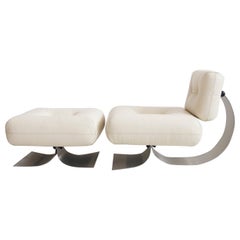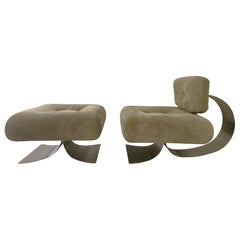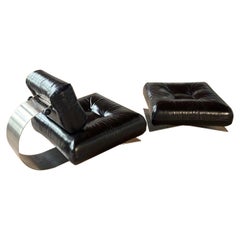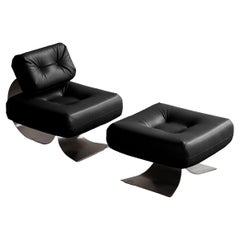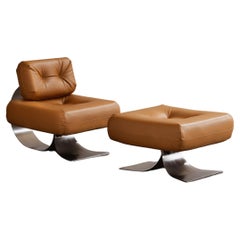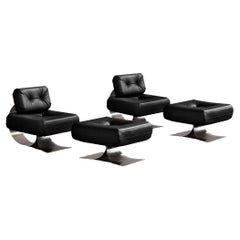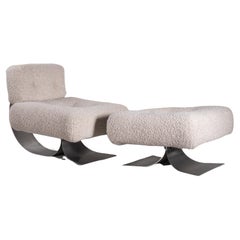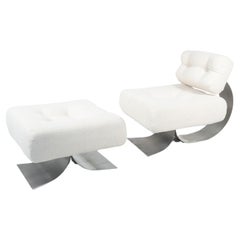Alta Lounge Chair And Ottoman By Oscar Niemeyer
Late 20th Century French Mid-Century Modern Lounge Chairs
Steel
2010s Brazilian Mid-Century Modern Lounge Chairs
Suede
Vintage 1970s French Mid-Century Modern Lounge Chairs
Steel
Vintage 1970s French Post-Modern Lounge Chairs
Leather
Vintage 1970s French Post-Modern Lounge Chairs
Leather
Vintage 1970s French Post-Modern Lounge Chairs
Leather
Recent Sales
Vintage 1970s Chairs
Metal
Mid-20th Century Brazilian Mid-Century Modern Lounge Chairs
Steel
Vintage 1970s Mid-Century Modern Lounge Chairs
Fabric
Vintage 1970s Brazilian Lounge Chairs
Leather
20th Century French Mid-Century Modern Lounge Chairs
Steel
Vintage 1970s French Modern Lounge Chairs
Stainless Steel
Late 20th Century French Mid-Century Modern Lounge Chairs
Steel
Mid-20th Century Brazilian Mid-Century Modern Lounge Chairs
Steel
Vintage 1970s French Mid-Century Modern Lounge Chairs
Steel
Vintage 1970s Brazilian Armchairs
Stainless Steel
21st Century and Contemporary Italian Mid-Century Modern Chaise Longues
Brass
Early 2000s German Mid-Century Modern Lounge Chairs
Chrome
People Also Browsed
Vintage 1930s Czech Art Deco Lounge Chairs
Beech, Sheepskin
Vintage 1970s Italian Post-Modern Beds and Bed Frames
Leather, Wood
Mid-20th Century Brazilian Mid-Century Modern Armchairs
Steel
Vintage 1960s Brazilian Mid-Century Modern Armchairs
Rosewood, Fabric
Vintage 1970s Canadian Space Age Beds and Bed Frames
Glass, Mirror, Wood
Vintage 1970s Italian Post-Modern Bedroom Sets
Leather, Wood, Lacquer
20th Century American Modern Chairs
Steel
Vintage 1960s Italian Mid-Century Modern Flush Mount
Brass, Nickel
2010s Italian Modern Chandeliers and Pendants
Alabaster, Brass
21st Century and Contemporary Swedish Scandinavian Modern Wall Lights an...
Metal
21st Century and Contemporary Swedish Mid-Century Modern Table Lamps
Textile
2010s Italian Modern Chandeliers and Pendants
Metal, Brass
2010s American Modern Side Tables
Steel, Iron
21st Century and Contemporary Italian Modern Screens and Room Dividers
Paper
Vintage 1970s Italian Space Age Architectural Elements
Fiberglass
Vintage 1960s American Mid-Century Modern Armchairs
Chenille, Walnut
Oscar Niemeyer for sale on 1stDibs
Oscar Niemeyer made modernist architecture sexy. In his signature designs, such as those for the planned capital city of Brasília, Niemeyer created a distinctively buoyant architectural vocabulary of sweeping curves, flowing lines and organic forms (attributes that also characterize his seductive furniture). As expressions of faith in the power of modern architecture and design to foster progress, Niemeyer’s buildings have a kind of heroic poetry.
Oscar Ribeiro de Almeida Niemeyer Soares Filho was born to an upper-middle-class family in Rio de Janeiro. (His father was a graphic designer.) While in graduate school, Niemeyer began working for Lúcio Costa, one of the few modernist architects working in Brazil in the 1930s. Niemeyer would be assigned to the design team for a new building in Rio for the Ministry of Education and Health. The famed Swiss-born French architect Le Corbusier was hired as a consultant on the project, and through him Niemeyer would absorb many lessons in bringing a sense of structural lightness to large buildings — though he would never embrace the geometric forms espoused by Le Corbusier and the members of the Bauhaus.
“I am not attracted to straight angles or to the straight line, hard and inflexible, created by man,” Niemeyer would write in his memoirs. “I am attracted to free-flowing sensual curves.”
Nowhere would Niemeyer demonstrate his love of curvature more expressively and elegantly than in his designs for the principal buildings for Brasília, a project begun in 1956. The dramatic Congressional Palace features two stark towers flanked by a domed structure and a bowl-shaped edifice, for the upper and lower legislative houses. He placed the Palácio da Alvorada (the presidential residence) on a small peninsula jutting into a lake, so that the sequence of parabolic columns on its facade casts a mirror image on the water. Niemeyer’s grandest achievement was the city’s cathedral, a stunning composition of 16 arched vertical supports with tinted-glass interstices.
Four years after Brasília was completed, in 1960, Brazil’s elected government was overthrown in a military coup. Niemeyer, a member of the Communist party, was harassed continually by the junta. He left the country and did not return until democracy was restored, in 1985.
While in exile, in the early 1970s, Niemeyer began collaborating on furniture designs with his daughter, Anna Maria Niemeyer. Their best known pieces are seating furniture — the Alta lounge chair and ottoman and the Rio rocking chaise, which have flowing bases made of sheets of lacquered wood or stainless steel, share the aesthetics of Niemeyer’s architecture.
The Alta’s deep, oversized seat pads nod — much like the chair designs of Niemeyer’s countryman Sergio Rodrigues — to the Brazilian penchant for long, languorous conversations. Examples of both designs are priced at about $20,000, depending on age, condition and materials. As you will see on these pages, Oscar Niemeyer’s furniture designs are sleek, sculptural, comfortable and elegant — as well as a compact emblem of the work of one of the great architects of our time.
Find vintage Oscar Niemeyer lounge chairs, tables and other furniture on 1stDibs.
Finding the Right Lounge-chairs for You
While this specific seating is known to all for its comfort and familiar form, the history of how your favorite antique or vintage lounge chair came to be is slightly more ambiguous.
Although there are rare armchairs dating back as far as the 17th century, some believe that the origins of the first official “lounge chair” are tied to Hungarian modernist designer-architect Marcel Breuer. Sure, Breuer wasn’t exactly reinventing the wheel when he introduced the Wassily lounge chair in 1925, but his seat was indeed revolutionary for its integration of bent tubular steel.
Officially, a lounge chair is simply defined as a “comfortable armchair,” which allows for the shape and material of the furnishings to be extremely diverse. Whether or not chaise longues make the cut for this category is a matter of frequent debate.
The Eames lounge chair, on the other hand, has come to define somewhat of a universal perception of what a lounge chair can be. Introduced in 1956, the Eames lounger (and its partner in cozy, the ottoman) quickly became staples in television shows, prestigious office buildings and sumptuous living rooms. Venerable American mid-century modern designers Charles and Ray Eames intended for it to be the peak of luxury, which they knew meant taking furniture to the next level of style and comfort. Their chair inspired many modern interpretations of the lounge — as well as numerous copies.
On 1stDibs, find a broad range of unique lounge chairs that includes everything from antique Victorian-era seating to vintage mid-century modern lounge chairs by craftspersons such as Hans Wegner to contemporary choices from today’s innovative designers.
